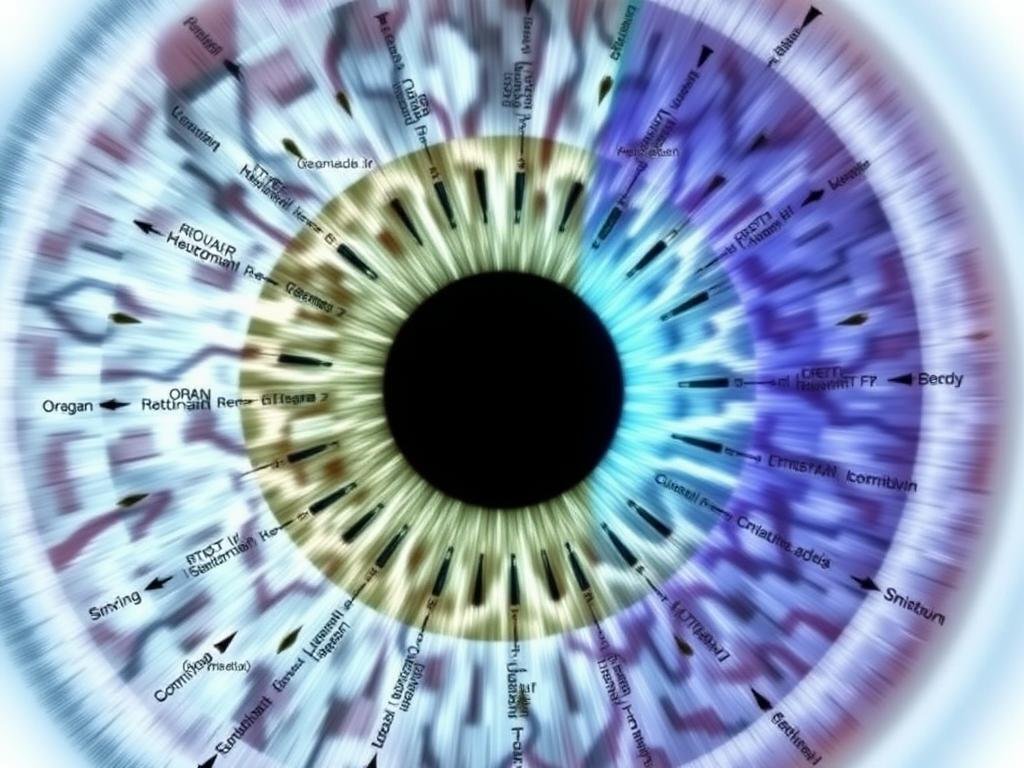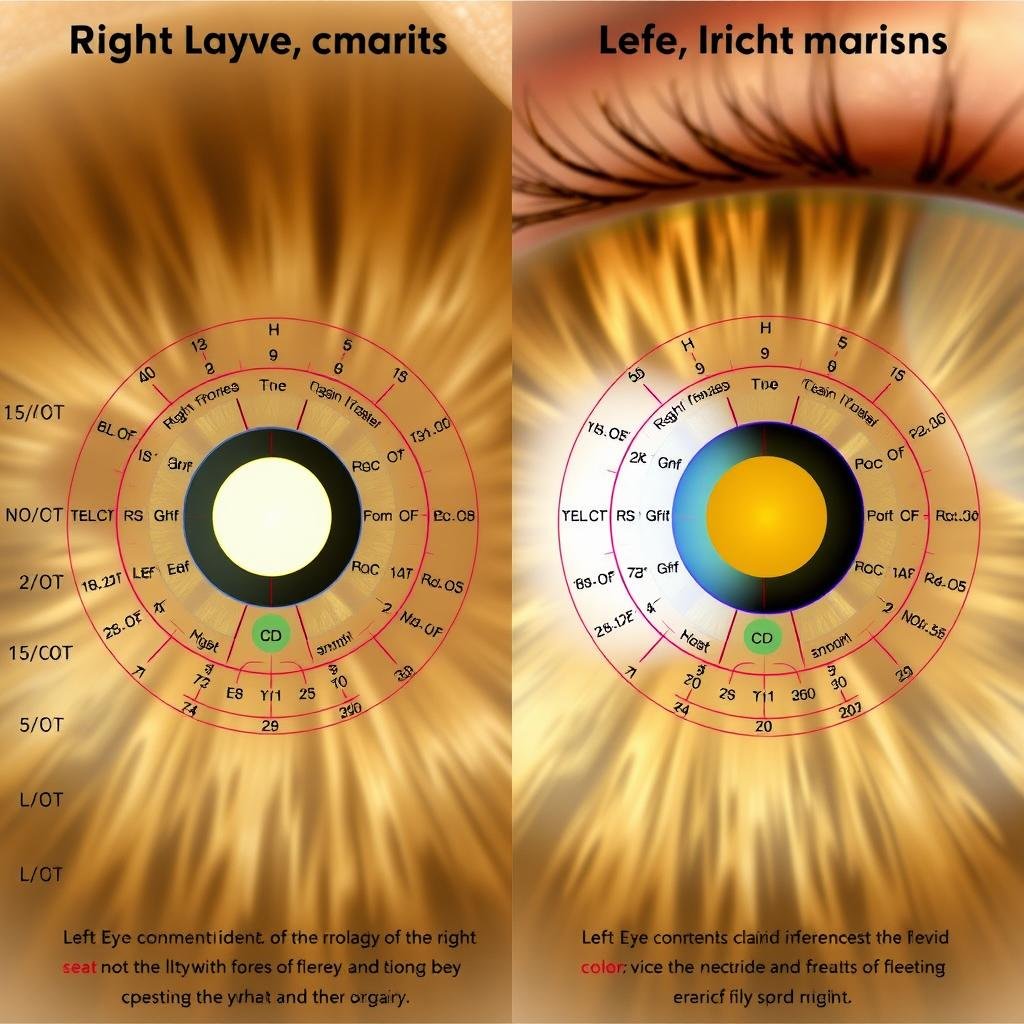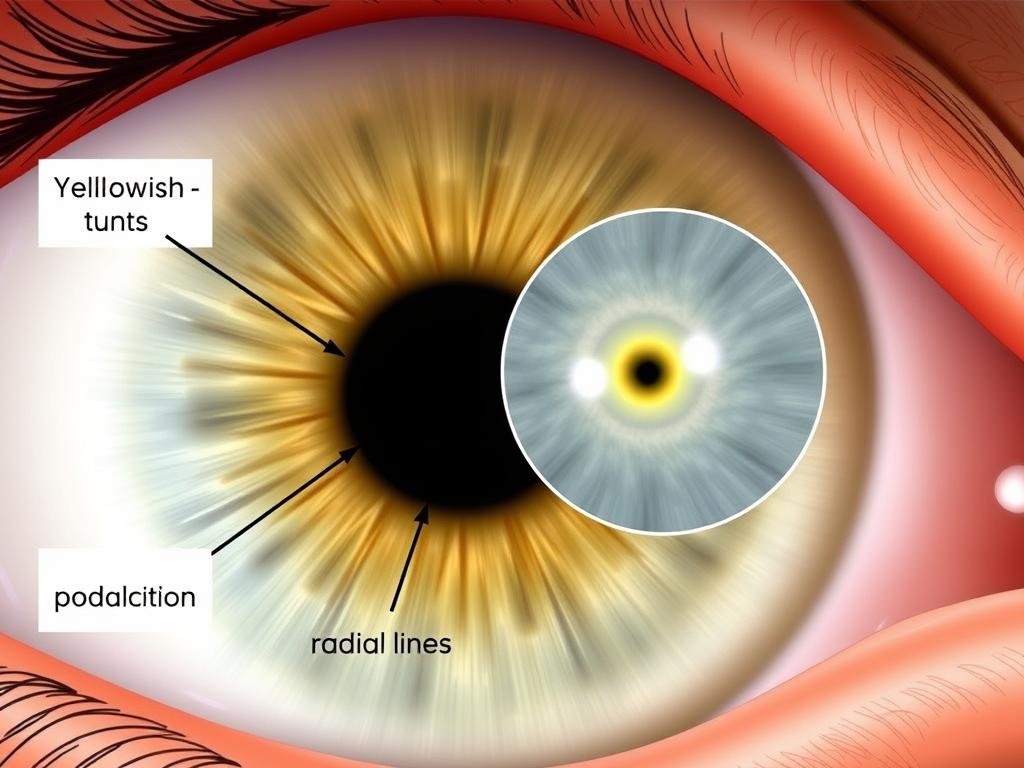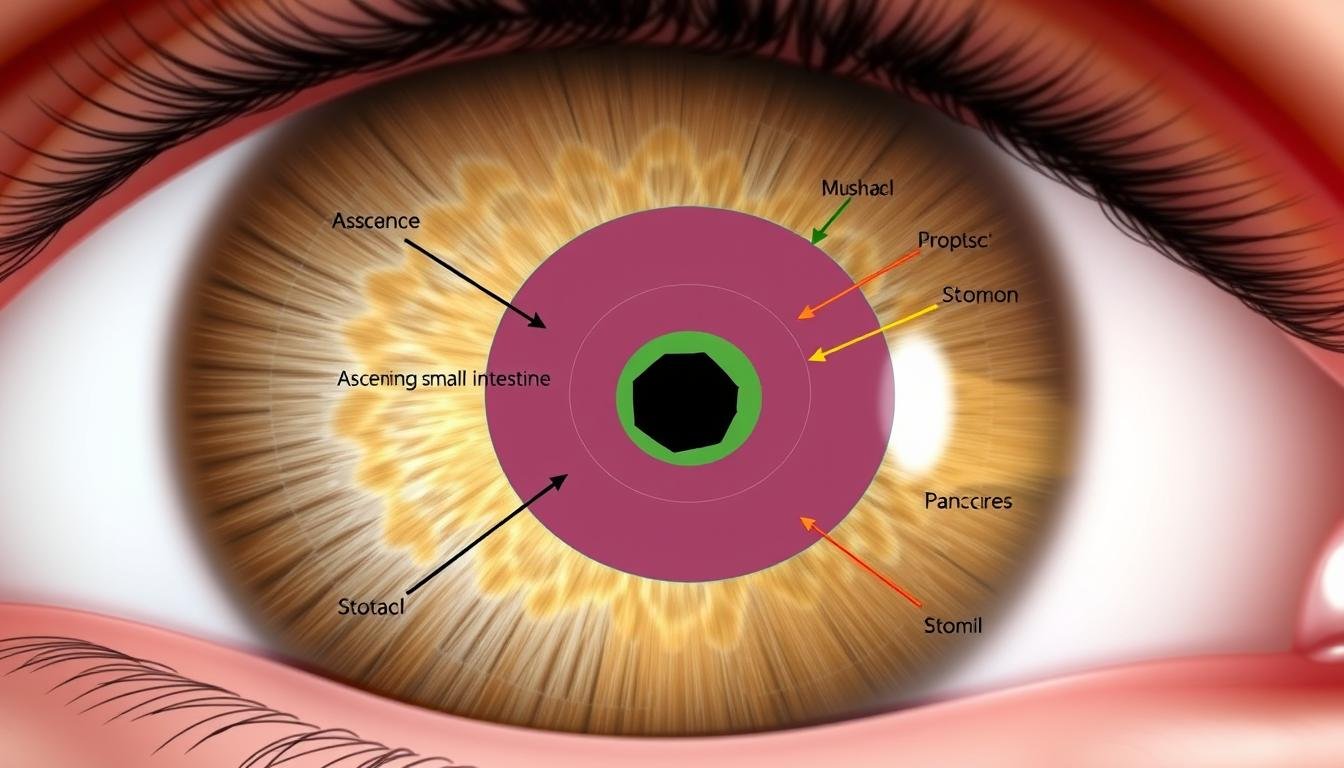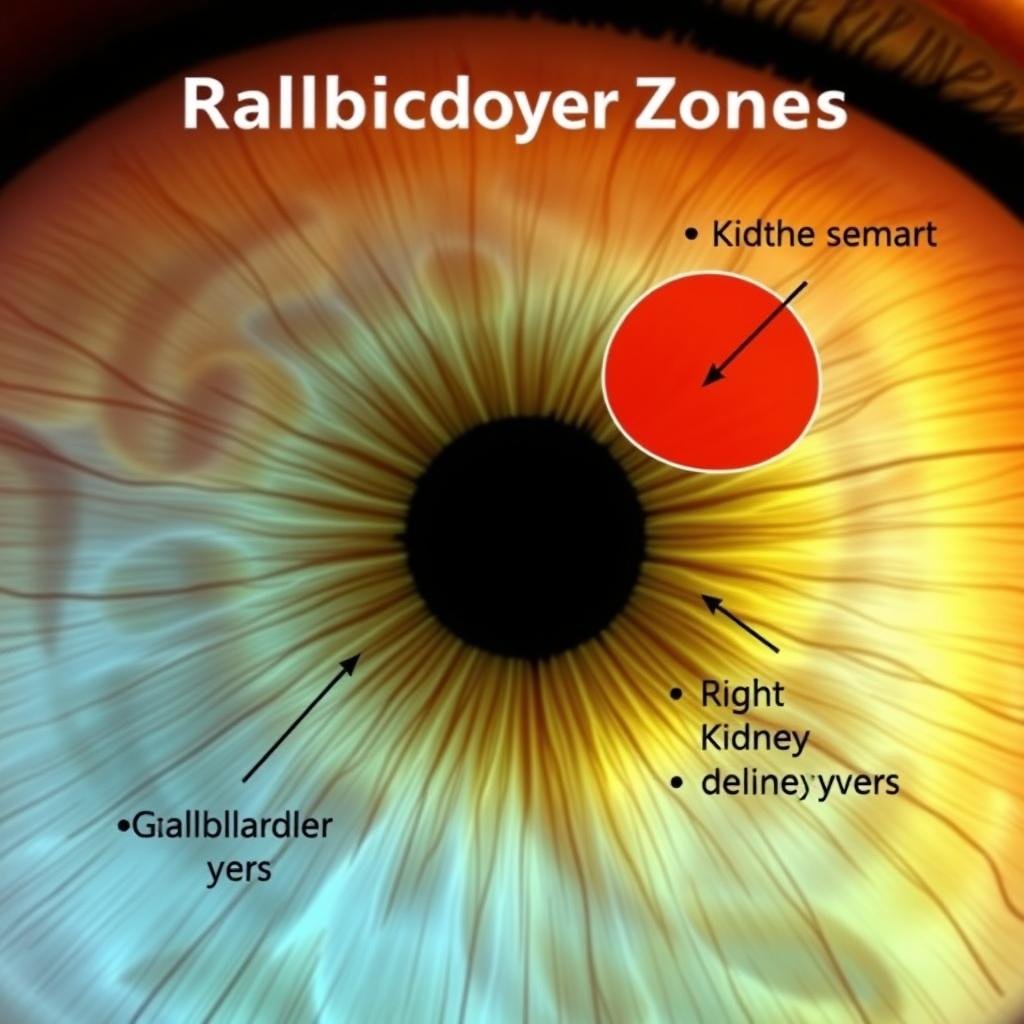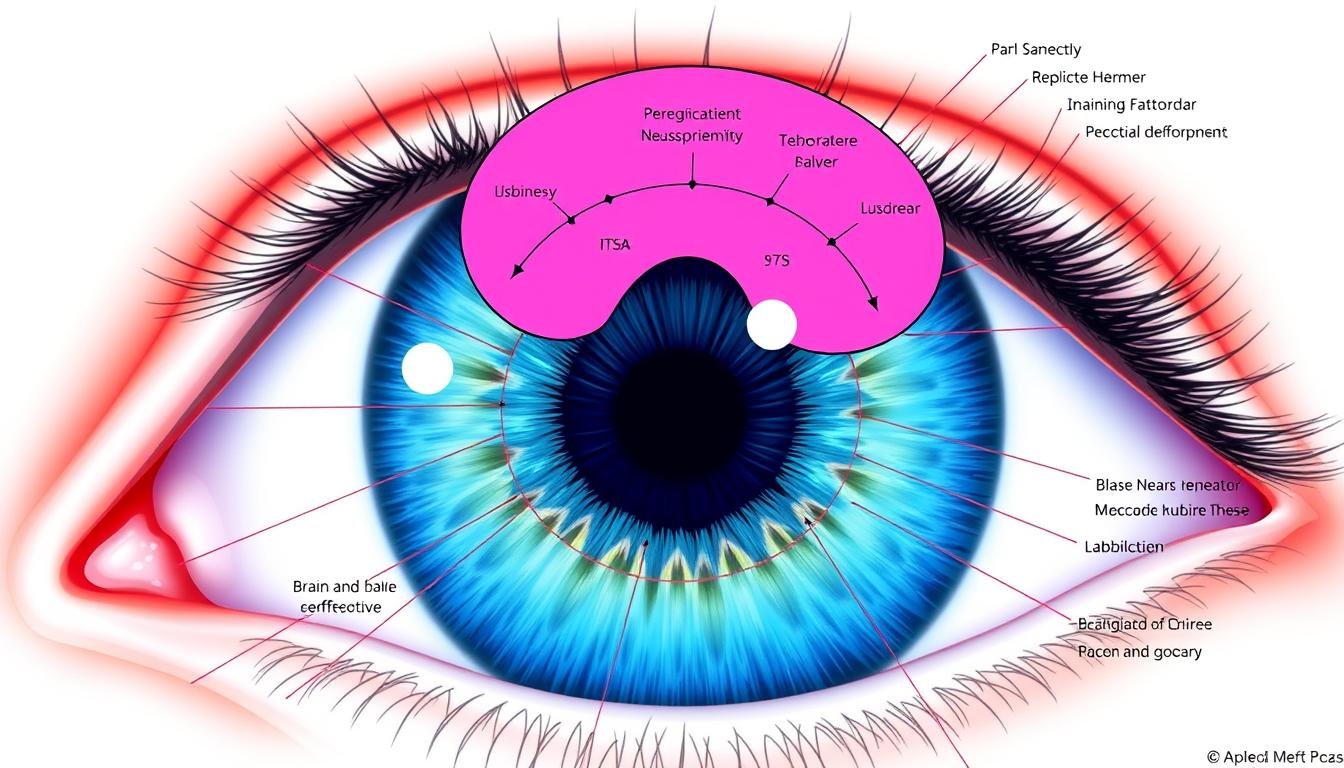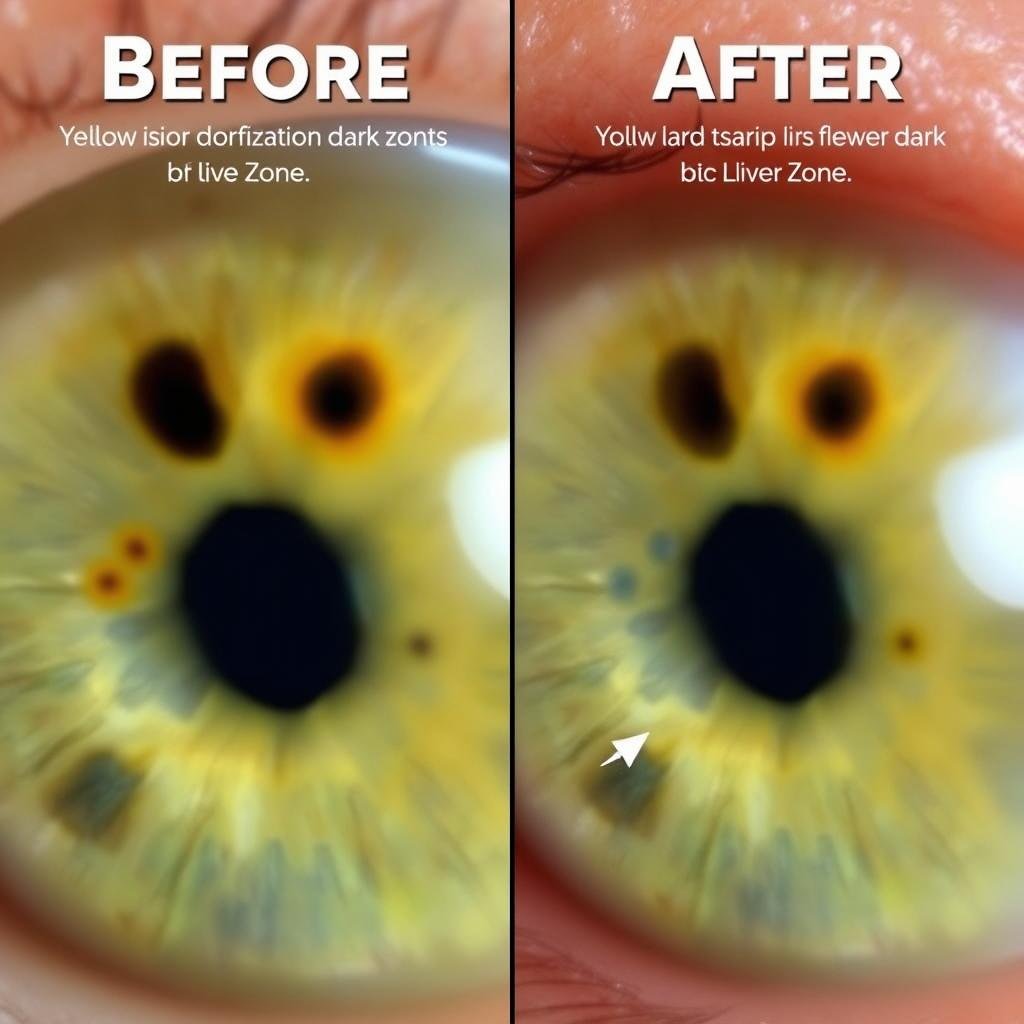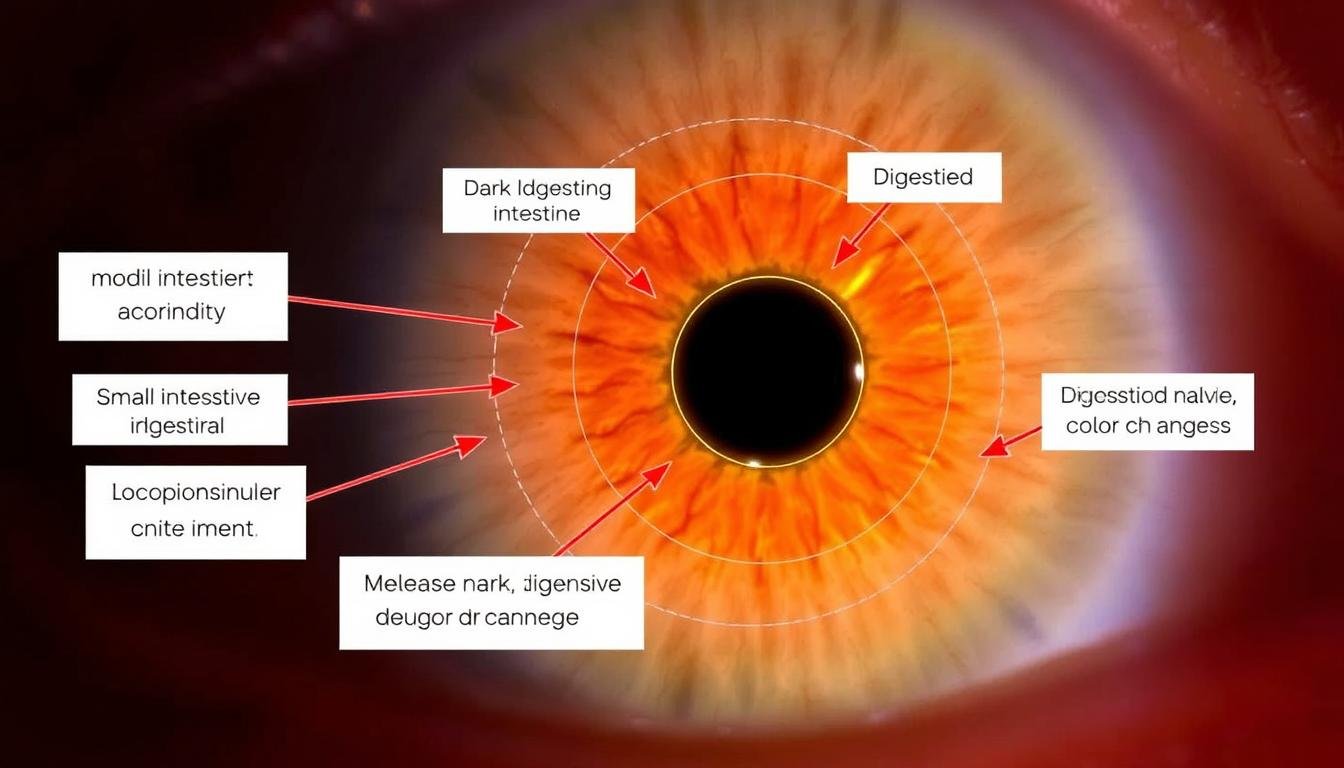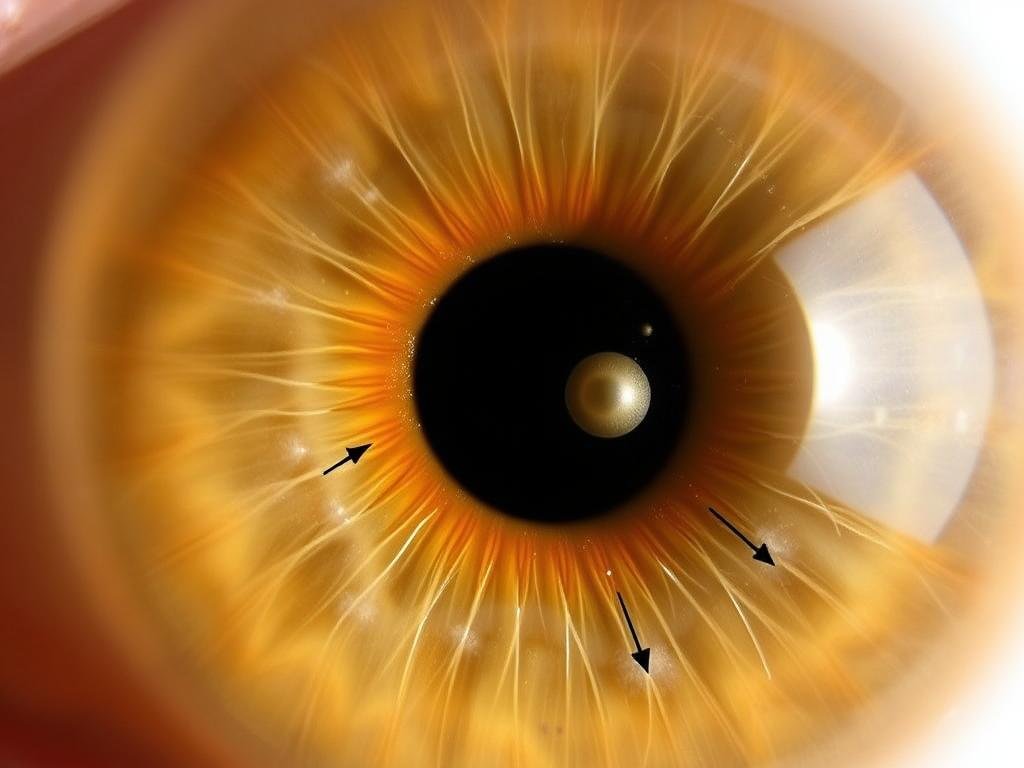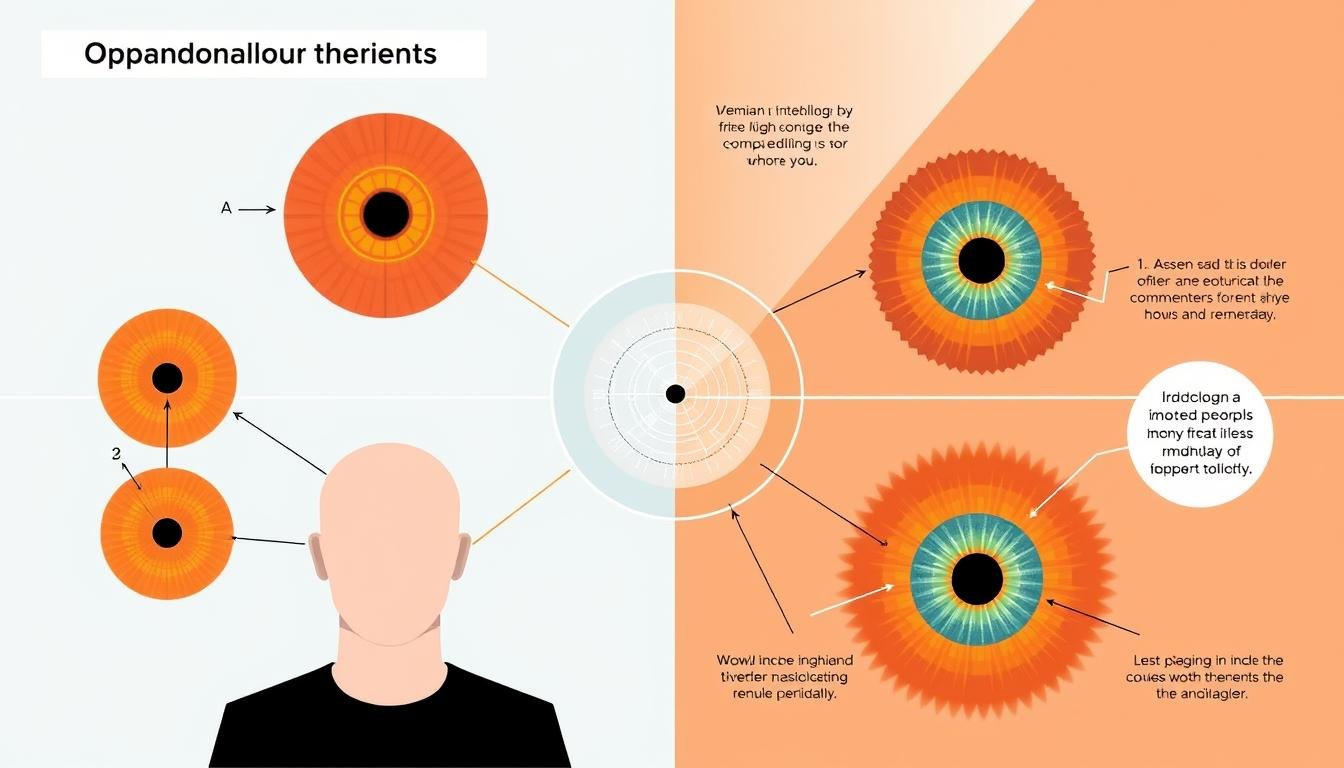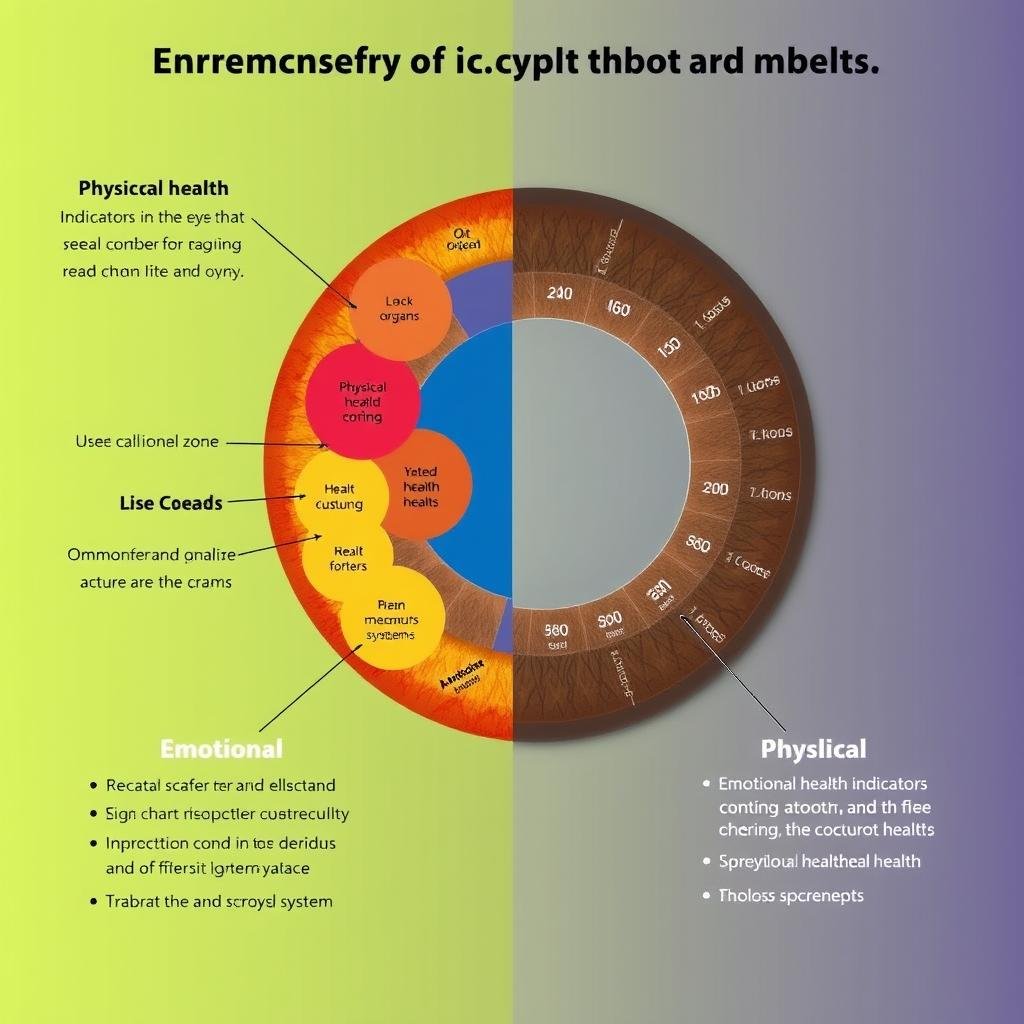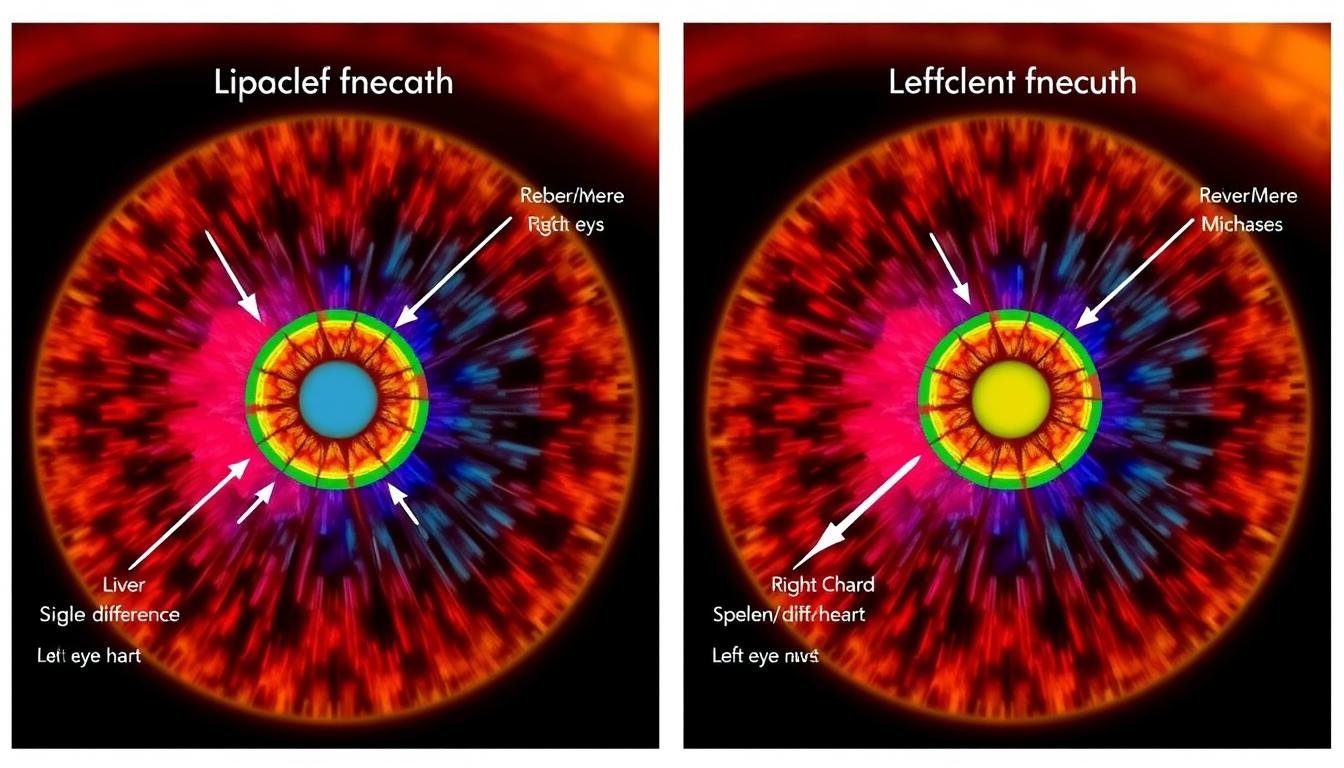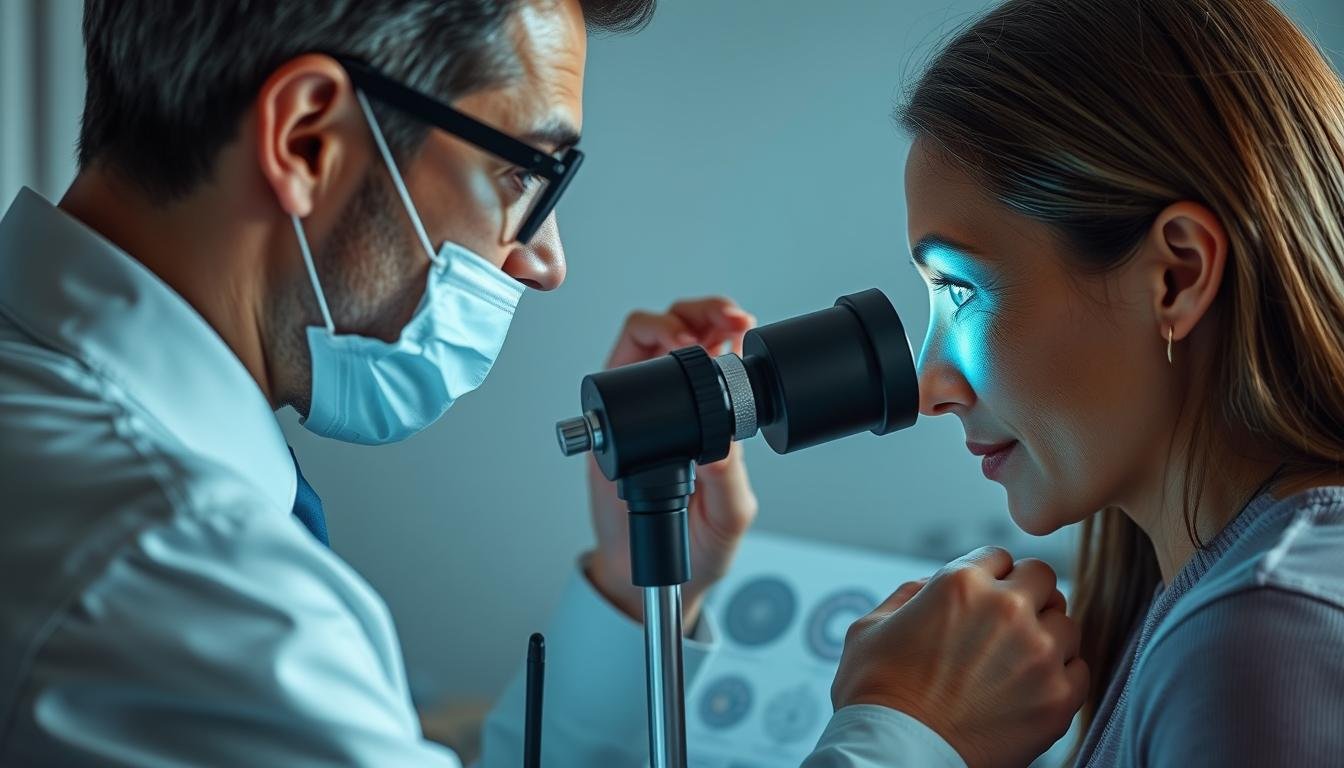Iridologia è l'affascinante studio dell'iride, la parte colorata dell'occhio, per valutare potenziali condizioni di salute e funzioni corporee. I professionisti ritengono che diverse zone dell'iride corrispondano a vari organi e sistemi del corpo, creando una mappa dettagliata che può rivelare preziose informazioni sulla salute generale. All'interno di questa pratica, il Iridology Chart Right Eye ha un significato speciale, poiché si ritiene che rifletta la condizione di specifici organi e sistemi corporei sul lato destro del corpo. Sebbene entrambi gli occhi forniscano preziose informazioni in iridologia, l'occhio destro è specificamente correlato al lato destro del corpo e ad alcuni organi dominanti come il fegato, la cistifellea e il colon ascendente. Capire come interpretare il grafico iridologico per l'occhio destro può fornire approfondimenti unici che completano ciò che viene osservato nell'occhio sinistro, offrendo ai professionisti un quadro più completo della tua salute. In questa guida completa, esploreremo perché l'occhio destro merita un'attenzione speciale nell'analisi iridologica, come interpretare i suoi modelli unici e quali informazioni specifiche sulla salute potrebbe rivelare che differiscono dall'esame dell'occhio sinistro. Che tu sia nuovo all'iridologia o desideri approfondire la tua comprensione, questo articolo ti aiuterà ad apprezzare il ruolo distintivo dell'occhio destro in questo metodo alternativo di valutazione della salute.Comprendere il Iridology Chart Right Eye e il suo ruolo



Grafico iridologico completo che mostra la mappatura dell'occhio destro su vari sistemi e organi del corpo
IL Iridology Chart Right Eye funge da mappa dettagliata che divide l'iride in più sezioni, ciascuna collegata a parti e sistemi specifici del corpo. A differenza delle tabelle generali di iridologia che potrebbero coprire entrambi gli occhi, una tabella specifica per l'occhio destro si concentra sulle correlazioni uniche tra l'iride destra e il lato destro del corpo, nonché sugli organi che si riflettono prevalentemente nell'occhio destro.
In iridologia, i professionisti ritengono che il corpo presenti una corrispondenza bilaterale, il che significa che l'occhio destro riflette principalmente organi e tessuti sul lato destro del corpo, mentre l'occhio sinistro corrisponde al lato sinistro. Tuttavia, questa relazione non è strettamente simmetrica, poiché alcuni organi hanno rappresentazioni più forti in un occhio rispetto all’altro.
In che modo l'analisi dell'occhio destro differisce dall'occhio sinistro
L'occhio destro in iridologia è particolarmente associato al “paterno” O “maschile” lato del corpo e si ritiene che rifletta i tratti ereditati dalla linea genetica del padre. Ancora più importante, ha connessioni più forti con organi specifici:
- Fegato e cistifellea (organi primari riflessi nell'occhio destro)
- Colon ascendente e parti dell'intestino tenue
- Rene destro e ghiandola surrenale
- Lato destro del cervello e del sistema nervoso
- Polmone destro e zona bronchiale
IL grafico per l'occhio destro presenta zone specifiche particolarmente importanti per la valutazione della salute. Ad esempio, la zona del fegato nell'occhio destro è in genere più dettagliata ed espansa rispetto alla mappa dell'occhio sinistro, consentendo ai professionisti di raccogliere informazioni più specifiche sulla salute e la funzionalità del fegato.
Migliora la tua conoscenza dell'iridologia
Scarica il nostro completo Grafico iridologico dell'occhio destro con spiegazioni dettagliate delle zone e correlazioni sanitarie. Perfetto sia per i principianti che per i praticanti esperti.
Scarica grafico gratuito
Zone chiave nel Iridology Chart Right Eye
IL Iridology Chart Right Eye contiene diverse zone critiche che corrispondono a organi e sistemi specifici. Comprendere queste zone consente ai professionisti di identificare potenziali problemi di salute e squilibri. Esploriamo le aree più significative della mappa dell'iride dell'occhio destro e cosa possono rivelare sulla tua salute.
Zona del fegato nel Occhio destro
La zona del fegato è una delle aree più importanti nella tabella iridologica dell'occhio destro, tipicamente situata tra le ore 7 e le ore 8. Questa zona è particolarmente importante perché il fegato si riflette principalmente nell'occhio destro piuttosto che in quello sinistro.
Quando esaminano questa zona, i professionisti cercano:
- Variazioni di colore: le tinte giallastre possono indicare stress epatico
- Macchie scure: potrebbero indicare un accumulo di tossine
- Segni bianchi: spesso associati a infiammazioni o cicatrici
- Linee radiali: possono suggerire cambiamenti strutturali nel tessuto epatico
La salute del fegato è considerata cruciale in iridologia poiché influenza molte funzioni corporee tra cui la disintossicazione, il metabolismo e l’elaborazione degli ormoni. I cambiamenti in questa zona possono riflettere non solo problemi specifici del fegato ma anche problemi metabolici più ampi.
Zone del sistema digestivo nel Occhio destro

Mappatura del sistema digestivo nell'occhio destro che mostra il colon ascendente, l'intestino tenue e gli organi correlati
L'apparato digerente ha una rappresentanza significativa nell'occhio destro, in particolare nel colon ascendente e in porzioni dell'intestino tenue. Queste zone appaiono tipicamente nelle sezioni inferiore e centrale destra dell'iride.
Le principali zone digestive nell'occhio destro includono:
- Due punti ascendenti: situati nel quadrante in basso a destra
- Valvola ileocecale: si trova vicino alla posizione delle 6
- Intestino tenue: si estende su porzioni dell'iride inferiore
- Pancreas: ha una rappresentanza parziale nell'occhio destro
I professionisti esaminano queste aree per segni come:
- Lesioni scure: possono indicare accumulo tossico o infiammazione
- Segni bianchi: spesso associati a irritazione o iperattività
- Cripte o lacune: potrebbero suggerire debolezze intrinseche
- Cambiamenti di colore: tonalità diverse possono indicare condizioni diverse
Zone della cistifellea e dei reni nel Occhio destro
La zona della cistifellea nell'occhio destro è particolarmente significativa poiché questo organo si trova fisicamente sul lato destro del corpo. Appare tipicamente tra le ore 8 e le ore 9 nell'iride. La zona del rene destro si trova solitamente nella parte inferiore dell’iride, spesso vicino alla posizione delle ore 5.
Queste zone vengono esaminate per:
- Cistifellea: i segni bianchi possono indicare infiammazioni o calcoli
- Rene: le macchie scure potrebbero suggerire un accumulo di tossine
- Entrambe le aree: i cambiamenti strutturali potrebbero riflettere condizioni croniche
- Tessuto circostante: le linee radiali spesso indicano dolore riferito o stress
Rappresentazione del cervello e del sistema nervoso nella Occhio destro
Il cervello e il sistema nervoso hanno una rappresentanza significativa nelle parti superiori del cervello grafico iridologico. Nello specifico dell'occhio destro, queste zone corrispondono principalmente all'emisfero destro del cervello e ai percorsi del sistema nervoso destro.

Mappature del cervello e del sistema nervoso nella parte superiore della tabella iridologica dell'occhio destro
Le zone neurali chiave nell’occhio destro includono:
- Emisfero cerebrale destro: porzione superiore dell'iride
- Aree di elaborazione sensoriale: regione temporale superiore (esterna).
- Controllo motorio: regione nasale superiore (interna).
- Sistema nervoso autonomo: rappresentazione sparsa
I professionisti cercano questi indicatori:
- Anelli nervosi: linee circolari che suggeriscono tensione nervosa
- Solchi radiali: possono indicare modelli di risposta allo stress
- Variazioni di colore: tonalità diverse che suggeriscono una varia attività neurale
- Segni strutturali: potenzialmente indicativi di problemi neurologici
Casi di studio: Iridology Chart Right Eye in pratica
Per comprendere meglio come funziona il Iridology Chart Right Eye viene applicato in contesti del mondo reale, esaminiamo diversi casi di studio in cui l'analisi dell'occhio destro ha fornito preziose informazioni sulla salute. Questi esempi dimostrano l'applicazione pratica dei principi dell'iridologia e il modo in cui i professionisti interpretano i vari segni dell'iride.
Caso di studio 1: Identificazione dello stress epatico attraverso l'analisi dell'occhio destro
Un cliente maschio di 42 anni si è presentato per una consulenza iridologica lamentando affaticamento, disturbi digestivi e occasionali dolori addominali al lato destro. Il terapeuta ha condotto un esame approfondito di entrambi gli occhi, ma ha prestato particolare attenzione alla zona del fegato dell’occhio destro.
L'esame dell'occhio destro ha rivelato:
- Colorazione giallastra nella zona del fegato (posizione ore 7-8)
- Numerose piccole macchie scure indicano un potenziale accumulo di tossine
- Linee radiali che si estendono dalla zona del fegato suggeriscono stress riferito
Sulla base di queste osservazioni, il medico ha suggerito modifiche dietetiche per supportare la funzionalità epatica, tra cui la riduzione del consumo di alcol, l’aumento dell’assunzione di acqua e l’assunzione di erbe a supporto del fegato. Dopo tre mesi, l’esame di follow-up ha mostrato una riduzione dello scolorimento e un minor numero di macchie scure nella zona del fegato, in correlazione con le segnalazioni del cliente di miglioramento dell’energia e riduzione del disagio.

Immagini prima (a sinistra) e dopo (a destra) che mostrano i cambiamenti nella zona del fegato dopo tre mesi di modifiche dietetiche
Caso di studio 2: Approfondimenti sul sistema digestivo dai modelli dell'occhio destro


Iride dell'occhio destro che mostra modelli distintivi nelle zone del sistema digestivo con annotazioni del medico
Una cliente donna di 35 anni ha richiesto una consulenza iridologica per gonfiore cronico, movimenti intestinali irregolari e sensibilità alimentare. L’iridologo ha esaminato entrambi gli occhi ma ha notato schemi particolarmente rivelatori nelle zone digestive dell’occhio destro.
L'esame dell'occhio destro ha evidenziato:
- Lesioni scure nella zona del colon ascendente (quadrante inferiore destro)
- Segni bianchi vicino all’area della valvola ileocecale (intorno alle ore 6)
- Solchi radiali che si estendono dalla zona dell'intestino tenue
Queste osservazioni hanno suggerito una potenziale infiammazione nel colon ascendente, irritazione della valvola ileocecale e modelli di stress che colpiscono l’intestino tenue. Il medico ha raccomandato una dieta di eliminazione per identificare i fattori scatenanti del cibo, l'integrazione di probiotici e le erbe digestive specifiche. Dopo aver implementato questi suggerimenti, il cliente ha riportato una riduzione dei sintomi del 70% entro due mesi e l'esame di follow-up dell'iride ha mostrato segni ridotti nelle aree precedentemente interessate.
Caso di studio 3: Valutazione della cistifellea attraverso l'iridologia dell'occhio destro

Primo piano della zona della cistifellea nell'iride dell'occhio destro che mostra segni di congestione e infiammazione
Un cliente di 51 anni venne per un consulto lamentando dolore intermittente al quadrante superiore destro, soprattutto dopo pasti grassi, e nausea occasionale. L’iridologo si è concentrato in particolare sulla zona della colecisti dell’occhio destro.
Dall'esame è emerso:
- Segni bianchi nella zona della cistifellea (posizione ore 8-9)
- Scolorimento giallastro che circonda l'area
- Diverse piccole lesioni suggeriscono un'irritazione cronica
Sulla base di questi risultati, il medico ha suggerito una dieta a basso contenuto di grassi, erbe a supporto della cistifellea e una maggiore assunzione di acqua. Il cliente è stato inoltre indirizzato dal medico per un esame ecografico, che ha confermato la presenza di piccoli calcoli biliari, validando la valutazione iridologica.
Porta la tua pratica di iridologia al livello successivo
La nostra raccolta di grafici di iridologia professionale comprende grafici dettagliati per l'occhio destro e sinistro, guide di riferimento e strumenti di analisi digitale.
Esplora le classifiche premium
Idee sbagliate comuni riguardo a Iridology Chart Right Eye
Nonostante il crescente interesse per l’iridologia, persistono diversi malintesi sull’analisi e sull’interpretazione dell’occhio destro. Comprendere queste idee sbagliate può aiutare sia i professionisti che i clienti a sviluppare una comprensione più accurata di ciò che l'iridologia può e non può rivelare.


Miti e fatti comuni sull'interpretazione delle carte iridologiche, in particolare per quanto riguarda l'occhio destro
Idea sbagliata 1: l'occhio destro riflette solo la salute fisica
Molte persone credono che l'occhio destro in iridologia fornisca solo informazioni sulla salute fisica, mentre l'occhio sinistro rifletta aspetti emotivi o psicologici. Questa è una semplificazione eccessiva.
Il mito: L'occhio destro mostra esclusivamente condizioni di salute fisica, mentre la salute emotiva e mentale sono visibili solo nell'occhio sinistro.
La realtà: Sebbene esistano alcune associazioni tradizionali tra l’occhio destro e gli aspetti fisici (in particolare legati alla linea genetica del padre), entrambi gli occhi possono rivelare informazioni sulla salute fisica, emotiva e mentale. L’occhio destro mostra in modo più prominente specifici organi fisici (come il fegato e la cistifellea), ma contiene anche zone legate alla funzione cerebrale, alle risposte allo stress e ai modelli emotivi.
Idea sbagliata 2: l'analisi dell'occhio destro può diagnosticare malattie specifiche
Uno dei malintesi più comuni sull'iridologia, inclusa l'analisi dell'occhio destro, è che possa diagnosticare malattie o condizioni mediche specifiche.
Cosa può fare l'iridologia
- Identificare le aree di potenziale stress o debolezza nel corpo
- Suggerire tendenze e predisposizioni costituzionali
- Rivelare modelli di infiammazione, congestione o tossicità
- Monitorare i cambiamenti nell'integrità dei tessuti nel tempo
- Fornire informazioni sui modelli di salute generali
Cosa non può fare l'iridologia
- Diagnosticare malattie specifiche come cancro, diabete, ecc.
- Sostituire i test medici o la diagnosi
- Prevedere con certezza le future condizioni di salute
- Identificare la patologia esatta o la progressione della malattia
- Servire come unica base per il trattamento medico
Idea sbagliata 3: i grafici dell'occhio destro e sinistro sono identici
Molti presumono che le carte iridologiche per gli occhi destro e sinistro siano immagini speculari l'una dell'altra, con mappature delle zone identiche. Questo non è accurato.

Confronto che evidenzia le differenze distinte tra i grafici iridologici dell'occhio destro e sinistro
Sebbene vi siano somiglianze nella disposizione generale, le mappe dell'occhio destro e sinistro presentano importanti differenze che riflettono la natura bilaterale del corpo e gli organi specifici che predominano su ciascun lato. La tabella dell'occhio destro enfatizza organi come il fegato e la cistifellea, mentre la tabella dell'occhio sinistro dà maggiore risalto ad organi come il cuore e la milza. Comprendere queste differenze è fondamentale per una valutazione iridologica accurata.
Idea sbagliata 4: i segni iridologi compaiono immediatamente dopo i cambiamenti di salute
Un altro malinteso comune è che i cambiamenti nello stato di salute appaiano immediatamente nell’iride, consentendo il monitoraggio in tempo reale delle condizioni di salute.
In realtà, mentre alcune condizioni acute possono mostrare cambiamenti relativamente rapidi nell’iride (entro giorni o settimane), molti segni dell’iride si sviluppano gradualmente nel tempo e riflettono modelli di salute e malattia a lungo termine. Le condizioni croniche richiedono in genere mesi o anni per manifestarsi come segni distinti dell'iride e alcuni segni costituzionali sono presenti fin dalla nascita e riflettono predisposizioni genetiche piuttosto che lo stato di salute attuale.
Questo è il motivo per cui l’iridologia è più preziosa come strumento per identificare tendenze costituzionali e modelli a lungo termine piuttosto che diagnosticare condizioni acute o fornire un monitoraggio sanitario quotidiano.
Iridology Chart Right Eye FAQ
In che modo l'occhio destro differisce dal sinistro in iridologia?
IL Iridology Chart Right Eye si concentra principalmente sugli organi e sistemi del lato destro del corpo, con particolare attenzione al fegato, alla cistifellea, al colon ascendente e al rene destro. È anche tradizionalmente associato alla linea genetica paterna. L'occhio sinistro, al contrario, enfatizza il cuore, la milza, il colon discendente e il rene sinistro, con associazioni tradizionali alla linea genetica materna. Sebbene entrambi gli occhi forniscano informazioni preziose, alcune condizioni sono più chiaramente visibili in un occhio rispetto all'altro.
L’iridologia dell’occhio destro può rilevare problemi al fegato?
L’occhio destro in iridologia ha una zona epatica prominente, tipicamente situata tra le ore 7 e le ore 8. Sebbene l’iridologia non possa diagnosticare malattie epatiche specifiche, può rivelare segni di stress, infiammazione o debolezza costituzionale nella zona del fegato. I segni più comuni includono colorazione giallastra, macchie scure, segni bianchi o cambiamenti strutturali nella zona del fegato. Queste osservazioni potrebbero suggerire la necessità di ulteriori indagini mediche ma non dovrebbero sostituire una corretta diagnosi medica.
Cosa indicano i segni bianchi nell'iride dell'occhio destro?
Segni o macchie bianche nell'iride dell'occhio destro indicano generalmente un'infiammazione o un'irritazione acuta nella zona del corpo corrispondente. Ad esempio, macchie bianche nella zona del fegato potrebbero indicare un’infiammazione del fegato, mentre macchie bianche nella zona digestiva potrebbero indicare un’irritazione intestinale. La posizione, la dimensione e l'intensità dei segni bianchi aiutano a determinarne il significato. Tuttavia, questi segni dovrebbero essere interpretati come indicatori di stress o attività piuttosto che come diagnosi di malattie specifiche.
Quanto è accurata l'iridologia dell'occhio destro rispetto ai test medici?
L’iridologia, inclusa l’analisi dell’occhio destro, dovrebbe essere considerata uno strumento di valutazione complementare piuttosto che un sostituto dei test medici. Sebbene alcuni professionisti riportino correlazioni tra i segni dell'iride e le condizioni di salute, l'iridologia non dispone della convalida scientifica e della specificità dei test diagnostici medici. È meglio utilizzarlo per identificare potenziali aree di preoccupazione che potrebbero giustificare ulteriori indagini attraverso mezzi medici convenzionali. Molti professionisti utilizzano l’iridologia insieme ad altri metodi di valutazione per un approccio più completo alla salute.
Posso imparare a leggere la mia tabella iridologica dell'occhio destro?
Sebbene sia possibile apprendere i principi di base dell'iridologia per l'autovalutazione, un'interpretazione accurata richiede una formazione adeguata, strumenti di ingrandimento di buona qualità ed esperienza. Se sei interessato ad apprendere l'iridologia dell'occhio destro per uso personale, valuta la possibilità di iniziare con una tabella di riferimento completa, materiali didattici di base e magari la guida di un professionista esperto. Ricorda che l'autovalutazione ha dei limiti, in particolare per quanto riguarda l'obiettività e la capacità di vedere la propria iride in modo sufficientemente dettagliato.
Le tabelle iridologiche per l'occhio destro variano tra i professionisti?
Sì, ci sono variazioni nelle tabelle iridologiche tra le diverse scuole di pensiero e i singoli professionisti. Sebbene i principi di base e la collocazione degli organi principali rimangano relativamente coerenti, potresti notare differenze nei confini precisi delle zone, nel livello di dettaglio, nei sistemi di codifica dei colori e nelle interpretazioni specifiche dei segni. Quando si studia l'iridologia, è utile comprendere queste variazioni e magari concentrarsi su un sistema stabilito finché non si padroneggiano i suoi fondamenti.
Con quale frequenza occorre esaminare l'occhio destro in iridologia?
Per il monitoraggio della salute generale attraverso l’iridologia, gli esami annuali sono in genere sufficienti, poiché i segni dell’iride correlati alle condizioni croniche cambiano in modo relativamente lento. Tuttavia, se stai lavorando con un professionista per affrontare problemi di salute specifici, potrebbero essere raccomandate valutazioni più frequenti (magari trimestrali) per monitorare i progressi. Le condizioni acute potrebbero mostrare cambiamenti entro poche settimane, mentre le condizioni croniche possono richiedere mesi o anni per mostrare cambiamenti significativi nell’iride.
Conclusione: il valore di Iridology Chart Right Eye Analisi

Un iridologo professionista che effettua un esame dettagliato dell'occhio destro utilizzando attrezzature specializzate
IL Iridology Chart Right Eye offre una finestra unica su aspetti della salute che altrimenti potrebbero rimanere nascosti. Comprendendo le zone e i segni specifici dell'iride destra, i professionisti possono ottenere preziose informazioni sulla condizione di organi come il fegato e la cistifellea, sulla funzione del sistema digestivo e sui processi corporei del lato destro.
Sebbene l’iridologia non debba sostituire la diagnosi medica convenzionale, può fungere da strumento complementare che fornisce una prospettiva olistica sulla salute. L'occhio destro, con la sua mappatura e le sue correlazioni distintive, fornisce informazioni essenziali che funzionano insieme all'analisi dell'occhio sinistro per creare un quadro più completo dello stato di salute generale.
Per coloro che sono interessati ad esplorare ulteriormente l'iridologia, studiare i modelli e le zone specifici della tabella dell'occhio destro è un ottimo punto di partenza. Che tu sia un operatore sanitario che desidera aggiungere un altro strumento di valutazione alla tua pratica o un individuo interessato ad approcci sanitari alternativi, comprendere l'iridologia dell'occhio destro può fornire preziose informazioni sulle tendenze costituzionali, sulle potenziali aree di debolezza e sui percorsi per migliorare il benessere.
Ricordate che il vero valore dell’iridologia non risiede nella sua capacità di diagnosticare malattie specifiche ma nella sua capacità di rivelare modelli, tendenze e potenziali squilibri che potrebbero guidare strategie sanitarie più mirate. Se utilizzata in modo ponderato e in combinazione con altri metodi di valutazione della salute, l’iridologia dell’occhio destro può essere una componente preziosa di un approccio globale alla salute e al benessere.
Inizia oggi il tuo viaggio di iridologia
Esplora la nostra raccolta completa di risorse sull'iridologia, comprese tabelle dettagliate per l'occhio destro e sinistro, guide per i professionisti e materiale didattico.
Ottieni il tuo kit completo per iridologia



